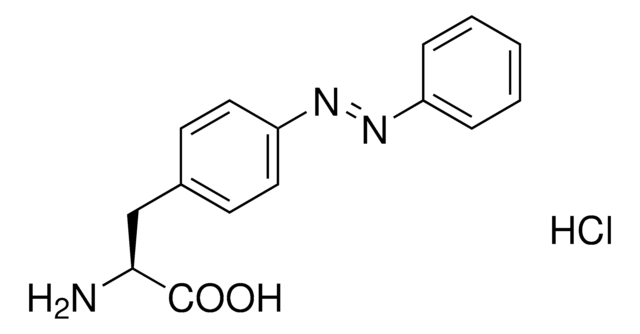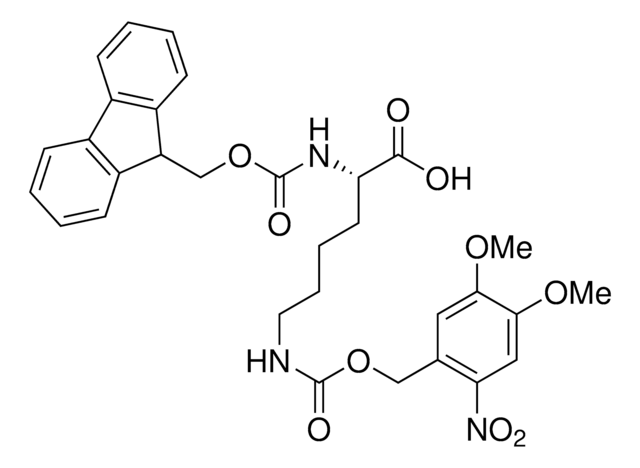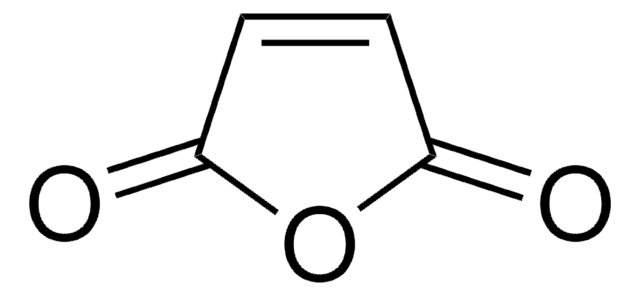915793
Methyl-o-nitropiperonyllysine
≥95%
Synonym(s):
N6-((1-(6-Nitrobenzo[d][1,3]dioxol-5-yl)ethoxy)carbonyl)-L-lysine, Light-triggered decaging Lys, Photo-controlled amino acid, Photocaged amino acid, Photocleavable lysine derivative, mNPK
About This Item
Recommended Products
Quality Level
Assay
≥95%
form
powder
storage temp.
−20°C
SMILES string
[N+](=O)([O-])c1cc2c(cc1C(OC(=O)NCCCC[C@H](N)C(=O)O)C)OCO2
InChI
1S/C16H21N3O8/c1-9(27-16(22)18-5-3-2-4-11(17)15(20)21)10-6-13-14(26-8-25-13)7-12(10)19(23)24/h6-7,9,11H,2-5,8,17H2,1H3,(H,18,22)(H,20,21)/t9?,11-/m0/s1
InChI key
ZXXFKVZFDGUTQW-UMJHXOGRSA-N
Application
Product can be used with our line of photoreactors: Including Penn PhD (Z744035) & SynLED 2.0 (Z744080)
Other Notes
Precise Photoremovable Perturbation of a Virus-Host Interaction
Genetic code expansion in the mouse brain
Genetically encoded optical activation of DNA recombination in human cells
Bioorthogonal Chemical Activation of Kinases in Living Systems
related product
Storage Class Code
11 - Combustible Solids
WGK
WGK 3
Flash Point(F)
Not applicable
Flash Point(C)
Not applicable
Choose from one of the most recent versions:
Certificates of Analysis (COA)
It looks like we've run into a problem, but you can still download Certificates of Analysis from our Documents section.
If you need assistance, please contact Customer Support.
Already Own This Product?
Find documentation for the products that you have recently purchased in the Document Library.
Our team of scientists has experience in all areas of research including Life Science, Material Science, Chemical Synthesis, Chromatography, Analytical and many others.
Contact Technical Service







